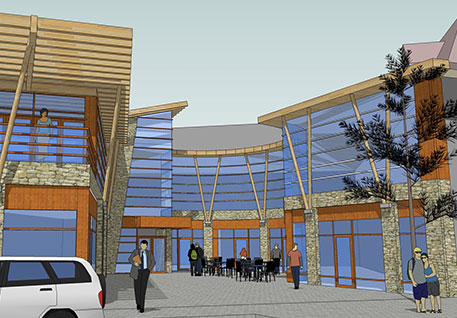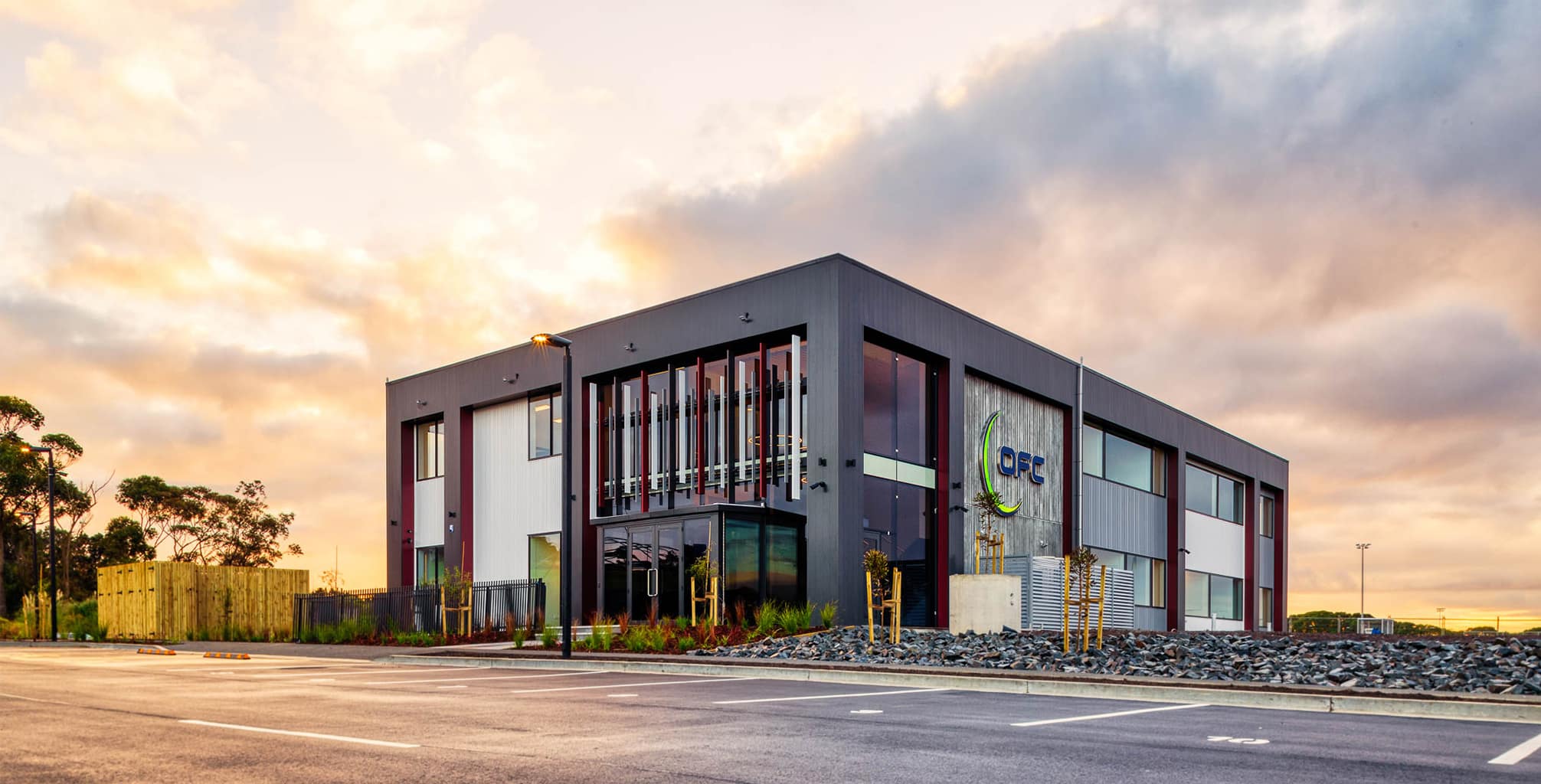Discover the Cutting-edge Services Provided by Commercial Architects for Your Following Job
Commercial architects play a crucial function in shaping the developed environment. They blend performance with aesthetic charm, producing spaces that resonate with brand name identity. These specialists employ ingenious layout solutions, lasting practices, and advanced modern technologies to enhance customer experiences. Their collaborative method warranties placement with client visions and operational demands. The level of their solutions commonly expands past design. The following action in comprehending just how these architects navigate intricate project demands may stun you.
Understanding the Function of Commercial Architects
The role of industrial architects may vary depending on the details job, their primary feature revolves around developing functional and visually enticing areas for services. These experts are charged with comprehending the distinct needs of each client, whether it be a retail shop, office complex, or industrial center. They conduct detailed website analyses and team up with stakeholders to assure that the style straightens with the service goals and brand name identity.Commercial architects additionally navigate various regulative needs, securing conformity with zoning regulations and building regulations. Their proficiency reaches creating sustainable designs that promote power effectiveness and environmental duty. Additionally, they take care of the job's timeline and budget, collaborating with service providers and engineers throughout the construction procedure. By blending imagination with technological knowledge, business architects play an essential function in transforming conceptual concepts into concrete facts, inevitably improving the capability and appeal of business rooms.
Cutting-edge Layout Solutions for Unique Areas
As industrial rooms significantly demand distinctiveness to stand out in open markets, ingenious layout solutions have ended up being important for architects. These specialists leverage their creativity and technological know-how to craft one-of-a-kind environments that reflect brand identity and enhance individual experience. By integrating sophisticated innovation and materials, business architects can change average rooms right into charming venues that involve consumers and inspire employees.Architects employ different methods, such as flexible reuse, which rejuvenates existing structures while preserving their historical significance. They also explore non-traditional layouts and multifunctional spaces that cater to varied requirements, making sure versatility for future growth.Furthermore, the incorporation of biophilic design-- bringing nature inside your home-- produces welcoming atmospheres that advertise wellness - commercial architects. This focus to detail in innovative design not just addresses aesthetic problems however also cultivates area and collaboration. Eventually, these customized remedies permit businesses to grow in an ever-evolving landscape, setting them in addition to rivals
Lasting Architecture Practices
Lasting design methods have actually become a pivotal emphasis for industrial architects seeking to produce impactful layouts that reverberate with environmental stewardship. These techniques prioritize the use of renewable energies, energy performance, and very little waste, reflecting a dedication to minimizing the eco-friendly footprint of structures. Architects incorporate materials that are sustainably sourced or reused, making sure that construction techniques align with environmental principles.Furthermore, the assimilation of green roof coverings and walls improves biodiversity while enhancing energy performance. Reliable water monitoring systems, such as rainwater harvesting, add to sustainability by preserving water resources. Natural air flow and daylighting techniques are also utilized to maximize interior environments, reducing dependence on synthetic heating and lighting.
Integrating Technology in Architectural Styles
An increasing number of business architects are welcoming technology as a transformative component in building layout. By leveraging innovative software application devices such as Building Info Modeling (BIM), architects can develop detailed 3D representations of jobs, permitting improved visualization and partnership amongst stakeholders. This innovation promotes real-time changes, minimizing errors and streamlining the design process.Additionally, architects are incorporating clever structure modern technologies right into their styles, which enhance power performance and owner convenience. Attributes such as automated illumination, environment control, and safety and security systems can be effortlessly integrated, promoting sustainable methods and lowering functional costs.The usage of online and augmented reality additionally enables clients to experience designs before building begins, giving invaluable understandings right into spatial connections and visual selections. Ultimately, the combination of modern technology in architectural layouts not just fosters technology however additionally assures that tasks are performed with accuracy and straightened with contemporary demands.

Project Monitoring and Control Solutions
Effective project management and sychronisation solutions are crucial for the successful implementation of business building tasks. These services assure that all aspects of a project, from first style to last building and construction, are seamlessly incorporated. Commercial architects play a significant function in working with in between various stakeholders, including clients, specialists, and vendors, to preserve clear communication and alignment on job goals.By executing structured techniques, architects can take care of timelines, spending plans, and resources efficiently, decreasing delays and cost overruns. look at this website They make use of job management software and devices to track development, manage documents, and assist in collaboration among group members.Additionally, these services include threat evaluation and mitigation methods, confirming possible difficulties are identified and resolved proactively. The result is a structured process that boosts general project effectiveness and quality, eventually resulting in an effective result that fulfills the client's vision and assumptions.
Regulative Conformity and Zoning Support
Effective governing compliance and zoning assistance are important for the success of any business project. Architects have to possess a deep understanding of neighborhood policies and zoning regulations to lead clients via the intricacies of the approval procedure. This proficiency not just assures adherence to legal demands yet also assists maximize task style and capability.
Browsing Local Laws
Exactly how can business architects guarantee their styles straighten with local guidelines? By remaining well-informed regarding the ever-evolving landscape of building ordinance and regional statutes, architects play an essential role in guaranteeing compliance. They conduct extensive study to comprehend the particular guidelines regulating materials, safety criteria, and building and construction approaches suitable per task. Collaborating very closely with local authorities, business architects can navigate through the intricacies of regulatory frameworks effectively. They additionally facilitate essential authorizations and inspections, simplifying the authorization process. This aggressive strategy not only mitigates possible legal problems yet likewise enhances task effectiveness. Inevitably, their expertise in navigating local laws empowers customers to realize their vision while sticking to all required requirements and guidelines.
Zoning Legislation Knowledge
Zoning regulation knowledge is essential for industrial architects guiding through the intricacies of land usage policies. These architects have comprehensive knowledge of regional zoning codes, which govern residential or commercial property growth, land use, and building requirements. By understanding these guidelines, they aid clients navigate the usually elaborate authorization procedures needed for building jobs. Their expertise guarantees conformity with zoning regulations, decreasing the website here risk of task hold-ups or lawful complications.Additionally, industrial architects provide important support in getting necessary licenses and variations, promoting smoother communications with neighborhood authorities. They also offer tactical suggestions to enhance site layout and maximize the potential of a residential property while sticking to zoning constraints. Inevitably, their zoning legislation effectiveness plays a crucial duty in the effective awareness of industrial jobs.
Collective Techniques With Customers and Stakeholders
Successful commercial style pivots on the capacity to promote strong collaboration with clients and stakeholders throughout the style procedure - commercial architects. Architects participate in open dialogues, making certain that all events' visions and requirements are integrated right into the job. This collaborative approach starts in the preliminary phases, where architects perform workshops and brainstorming sessions, allowing customers to verbalize their goals and concerns.Stakeholder input is equally essential; architects usually organize meetings with area members, city governments, and various other relevant entities to collect diverse perspectives. By using visualization tools, such as 3D modeling, architects facilitate far better understanding and communication.This repetitive feedback process not just enhances design top quality yet likewise builds depend on, leading to even more successful end results. Inevitably, the collective ideology of commercial architects transforms ideas into practical areas that mirror the ambitions of customers and the wider community, guaranteeing a browse around this web-site harmonious connection throughout the job lifecycle

Regularly Asked Questions
What Is the Typical Timeline for an Industrial Architecture Project?
The normal timeline for an industrial style project differs, typically spanning 6 to 18 months. Variables affecting this period include job intricacy, regulatory approvals, and customer responsiveness, influencing each phase from layout to building and construction conclusion.
How Do Commercial Architects Cost for Their Providers?
Commercial architects usually charge based upon project extent, complexity, and dimension. Typical fee frameworks consist of hourly prices, taken care of charges, or percentage-based costs determined from the overall construction expense, ensuring openness and alignment with customer assumptions.
Can Commercial Architects Assist With Interior Decoration?
Commercial architects can certainly help with indoor style, incorporating capability and aesthetics. Their know-how warranties cohesive areas that straighten with architectural vision, boosting user experience while fulfilling regulatory demands and customer objectives via ingenious style solutions.
What Types of Customers Do Commercial Architects Commonly Deal With?
Commercial architects normally collaborate with diverse customers, consisting of services, government entities, schools, and charitable companies (commercial architects). Each customer looks for tailored architectural services to satisfy certain useful and visual requirements for their tasks and environments
How Do Commercial Architects Stay Updated With Design Trends?
Commercial architects stay updated with design trends through continuous education, participating in industry conferences, taking part in professional networks, and looking into arising modern technologies. They additionally team up with various other specialists to obtain understandings right into innovative products and style methods.